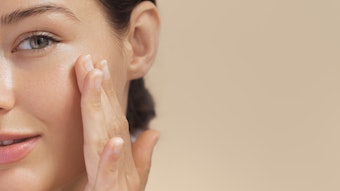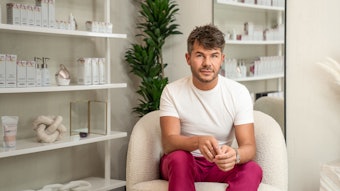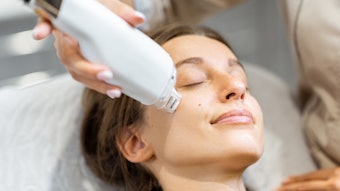
Only on SkinInc.com: The following exclusive article was written by Richard F. Eisen, MD, and Ramzi W. Saad, MD, renowned board-certified dermatologists at South Shore Skin Center and Spa, one of Massachusetts’ most progressive dermatology practices offering a wide range of medical, surgical and cosmetic services.
Although some expectant mothers are fortunate enough to have radiant, problem-free skin for the duration of their pregnancy, others may experience a number of dermatological challenges that go well beyond the flushed sheen of the “pregnancy glow.”
From severe acne and the “mask of pregnancy” to stretch marks and spider veins, pregnancy can bring about a variety of skin issues that can be unsightly or downright problematic. Some skin conditions, such as linea nigra, may slowly disappear following childbirth, but other issues, such as stretch marks or spider veins, may require cosmetic treatment in order to restore beautiful, clear skin.
Dark patches and lines
Melasma, dark brown or gray patches that appear on the cheeks, forehead, chin and above the lip, is very common during pregnancy. It is often referred to as the mask of pregnancy and is usually triggered by hormones. Sun protection is the most common treatment for melasma, and dermatologists recommend pregnant clients wear sunscreen every day along with a wide-brimmed hat. Linea nigra, a dark vertical line running from the client's navel to the pubic bone, is also triggered by hormones during pregnancy and usually appears gradually after the fourth month. In many cases, the mask of pregnancy and linea nigra slowly disappear after the baby is born, but some mothers may exhibit these conditions for years. It can be safely treated after pregnancy with Fraxel re:store and re:pair laser treatments or with the topical medication. It is important to work with a dermatologist to help determine the right approach for your client, which may require maintenance therapy to help keep melasma from returning.
Saad suggests that for skin care clients who have melasma, it is very important to recommend that they wear sunscreen because the sun makes the condition worse and darker. He also says that, in order to fade melasma, tretinoin or hydroquinone may be used.
Stretch marks and PUPPP
Stretch marks may appear on the hips, stomach, upper thighs or breasts during pregnancy. They develop deep within the dermal layers and may begin as red lines during pregnancy and change to shiny, white lines post-pregnancy. Some clients may also develop an itchy rash known as PUPPP (pruritic uticarial papules and placques of pregnancy) during the last part of their pregnancy. PUPPP usually resolves after the pregnancy. Lasers can reduce the redness in stretch marks.
According to Saad, the appearance of stretch marks can be managed if they have a lot of blood vessels (and are more noticeable) by being treated with a V beam or pulsed-dye laser.
Saad also says that PUPPP is an itchy rash that can appear at the end of the third trimester and after delivery. It’s harmless and can be treated with topical steroids.
Acne and scarring
Acne isn't just for teens. Expectant mothers may experience acne brought on by changes in hormones and/or elevated levels of cortisone in the body (due to stress) for the first time during their pregnancy. Although most acne outbreaks are not severe in some cases, acne can result in scarring. About 40% of individuals with acne in general benefit from treatment by a physician. There are several topical acne medications that may be safely used during pregnancy and will not harm the fetus. Consider referring your client to a dermatologist that prescribe a topical acne medication that is right for you.
Severe acne during pregnancy can result in acne-scarring. It does no good to try to reduce your acne by picking and scratching at it. The picking and scratching of acne (a condition known as acne excoriée) can lead to infection and scarring. If you suspect that your client has acne excoriée, consider referring them to a dermatologist for treatment.
If your client has acne scarring, Fraxel re:pair laser treatments can erase the appearance of it and treatment may be done after pregnancy.
According to Saad, the standard treatment for acne is benzoyl peroxide and oral antibiotics. For acne scarring, treatment with a resurfacing laser such as the Fraxel laser is ideal.
Abdominal sagging
Thermage treatments can help firm and tighten the loose abdomen after childbirth. Thermage treatments utilize radio- frequency technology to tighten and contour the skin. It is a noninvasive procedure that works to smooth wrinkled, sagging skin on the abdomen, and may also be used on the upper arms and thighs. Results may be seen after one treatment and there is no recovery time. One treatment takes approximately 90 minutes.
Spider veins
Facial spider veins (also referred to as visible blood vessels or telangiectases) may appear during pregnancy on the nose, cheeks, or chin. Although these visible blood vessels are usually not a serious problem, they can be unsightly. Lasers and photorejuvenation therapy can reduce the appearance of telangiectases. Intense pulsed light (IPL) is a photorejuvenation treatment that can minimize the appearance of broken/visible blood vessels. IPL delivers light energy to the skin surface in precise pulses to rejuvenate the skin. IPL is effective for all skin types and can provide immediate, long-lasting results.
Leg spider veins may develop due to the pressure of the baby on the abdomen. Although spider veins are not generally painful, they can be unsightly and bothersome to many people. Spider veins on the legs may be treated with a gentle YAG laser in one-to-three sessions. Healing times are quicker, there is little discoloration at the treatment site and fewer treatments are needed than with traditional laser therapy.
Sclerotherapy is another effective treatment for leg spider veins. During the treatment, a concentrated salt solution is injected into the spider veins, resulting in damage to the inside wall of the vein and reduction of the appearance of the veins. Several treatments are necessary to achieve the desired cosmetic result. Compression stockings must be worn for two weeks after the procedure to achieve optimal results. Sclerotherapy treatments may be performed as often as once a month. A dermatologist can determine whether gentle YAG or sclerotherapy would be most appropriate for your client.










